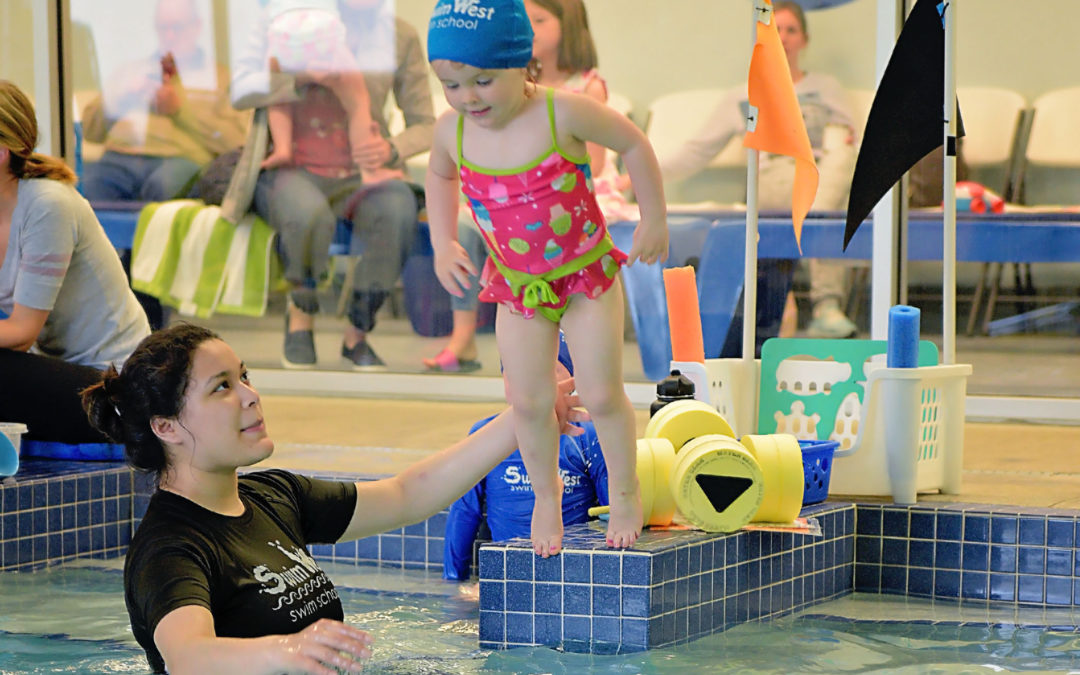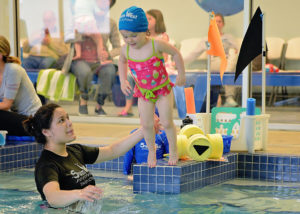When we first began swim lessons at SwimWest, my toddler son wanted absolutely nothing to do with goggles. He loved the water and would happily put his face in and blow bubbles but try to put those tight bands around his head and he was NOT having it.
Fast forward a few years and he is now swimming in the lap lanes and wouldn’t dream of heading to his lesson without his favorite pair strapped around his head. The ease of being able to see where he is going, dive for rings (and not have red, irritated eyes) has converted him to a devoted wearer.
While I’m happy he’s happy, I also understand the need for him to learn to swim WITHOUT the aid of goggles. With drowning one of the leading causes of death in young children, teaching water safety to kids is essential. Most accidental drownings occur when the child is NOT expected to be swimming – for example, they are reaching for an item in the pool and fall in, or they overestimate their abilities and jump in without an adult knowing.
In situations where kids fall into the water, kids rarely have the typical swim “tools” – like life jackets to help float or goggles to help see under water. Because of this, it’s critical that children are able to swim without these aids. During swim lessons, SwimWest instructors will help teach children how to jump into the water and swim to the wall without goggles. This helps ensure the kids won’t panic if they ever fall into the water and gives them confidence to find their way to safety.
Even if your child is wearing goggles the majority of the time, they should learn how to jump in to the water without them – including from the diving board. One thing I noticed this summer at the outdoor pool was that my son’s goggles would slip down his face fairly often when he jumped off the diving board, or water would leak in from the force of hitting the water. Luckily, he never panicked because he had learned how to swim to safety without them.
While there are certainly pros to wearing goggles, it should always be a choice of the individual swimmer. If wearing goggles interferes with your young swimmer’s enjoyment of swim lessons, don’t force it. Try again in a few weeks and in the meantime, let your child play with the goggles at home or wear them during bathtime.
If you have any questions about wearing goggles or swim safety, talk with your child’s instructor or stop by the front desk.



